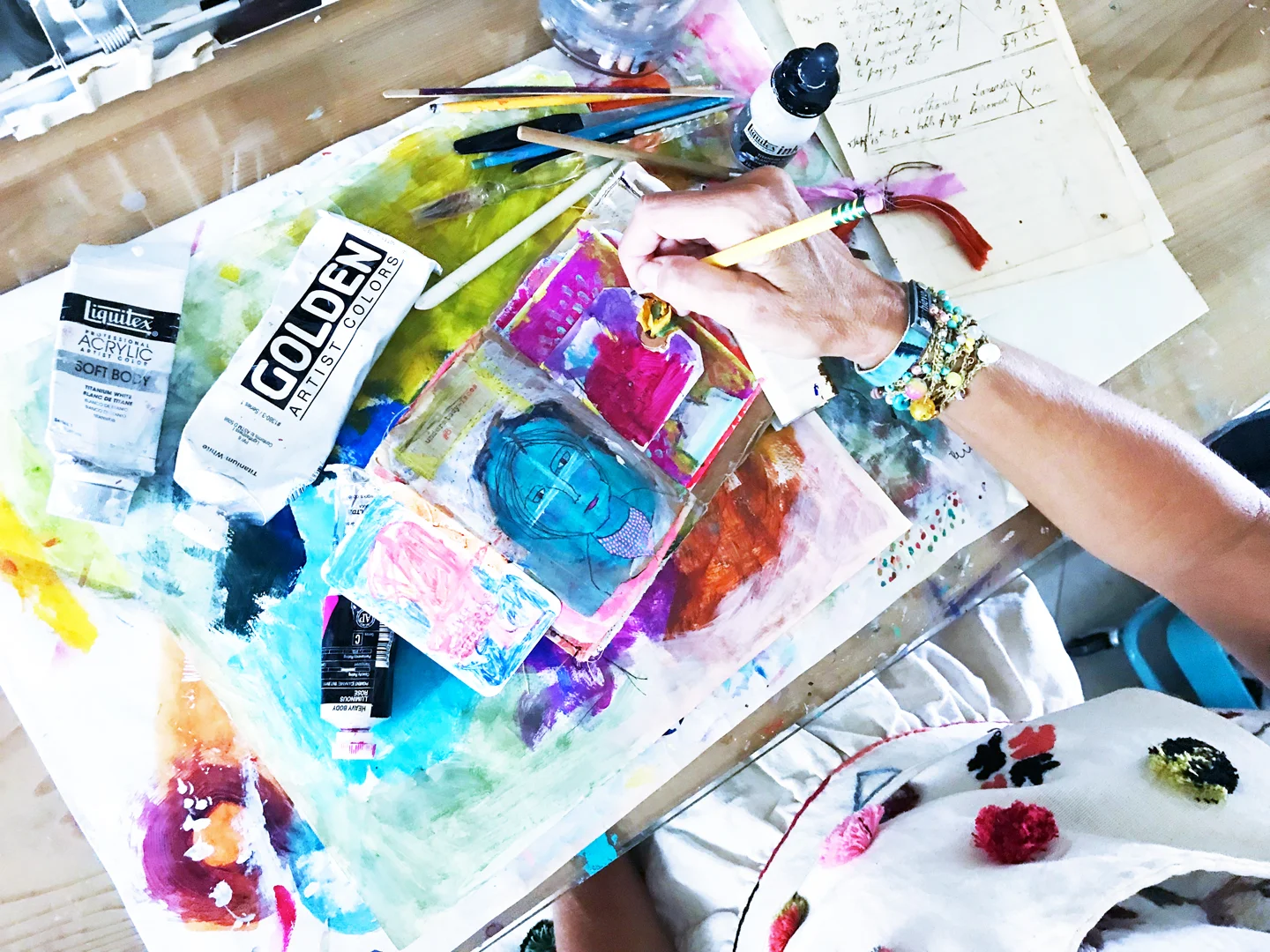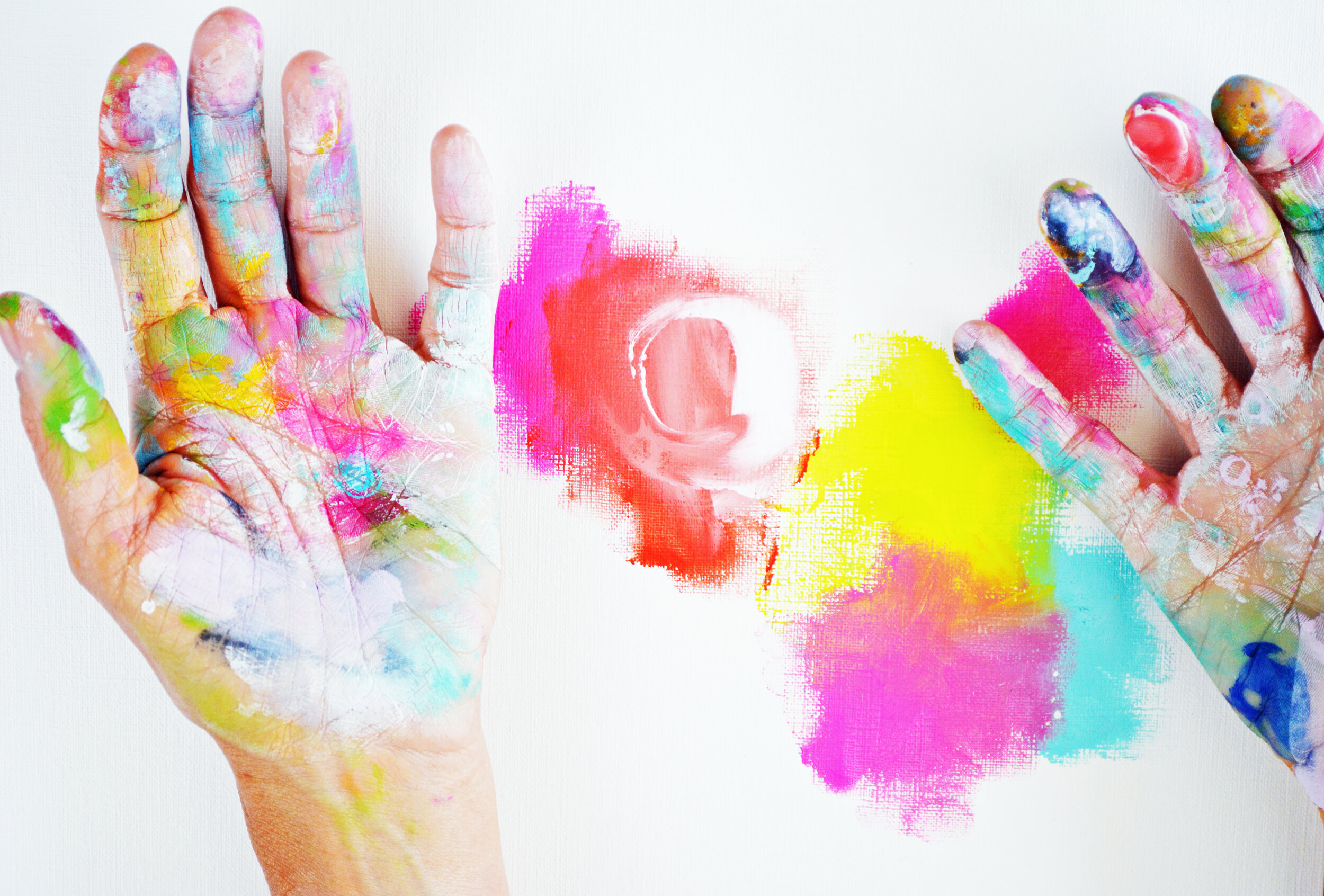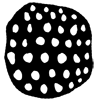5 ART PROMPTS FOR STAYING INSPIRED
1. Turn ordinary items into extraordinary art tools.
Let your surroundings inspire you. Pick up everyday items and put them to work as your tools when you create. Choose items like twigs, pool noodles, and laundry sheets. Each of these items can be fashioned into something new and useful as you creative, a twig becomes a stamp, a cut of noodle is now a mark maker and a laundry sheet is transformed into a beautiful collage element.
In my book Paint, Play, Explore, I will share my top choices for objects that can easily be repurposed so that each of us can create in a unique and interesting way. One of my favorites? A makeup wand. It makes bold strokes and interesting lines when dipped in acrylic paint and applied to your substate of choice.
2. Let go and don’t overthink.
The biggest hurdle for most mark makers is learning not to overthink the process. Practice and experimentation are key to getting over this obstacle. We need to learn to stop second guessing ourselves as artists and begin trusting our instincts as we push through the creative process.
I recommends experimenting with your tools and mediums you rarely reach for when you are creating. Resists are a great place to start. Do some tests with different resist tools to get familiar with the concept of working blind. Make notes about which resist mediums are your favorites. Colorless or clear wax crayons, masking fluids, and rubber cement are all great choices for testing out this interesting medium.
3. Start with texture.
Fill a background with color and you no longer have a blank page. But fill it with texture and you have so much more to work with. In the video Art Journaling Exercises: 15 Creative Prompts, I share a “ build your background technique” where you use the art of collage to set up a base that is both visually pleasing and full of physical texture. Begin with a stack of random papers. Gather text, book, and patterned paper. Next, tear the sheets into smaller bits and adhere them to Bristol paper using gel medium. Don’t overthink the process, but instead reach for pieces blindly.
Allow the papers to overlap, creating ridges and valleys in your foundation. This will create beautiful color variations once you begin to add a layer of color to your surface. Once your substrate is fully covered and dry, paint your collage with a 1 to 1 ratio of gesso and glaze. Let dry fully. This creates a nice workable surface for mark making. Once you are comfortable with the process move on to other substrates such as canvas panels and art boards.
4. Don’t forget about the words.
I believe that words are an important part of our creative process. Whether hidden or front and center words have to power to draw the viewer in to a work of art. Read more about why I believe art journaling is a key component when creating here - “Art Journaling: The Wings to Get Started” in the May/June 2018 issue of Cloth Paper Scissors magazine.
Words are the all-important strands that tie the page together. Type, stamp, or hand letter them; just get them on the page. If you aren’t a fan of your handwriting try using modern tools such as stamps and stencils. You can also print or cut words to form a collage style element of journaling in your work.
5. Learn to embrace color—lots of color.
Color is what makes my artistic heart sing. My studio, a neutral palette by my standards, is the perfect contrast to what I create everyday in the form of saturated marks and lines. In the video Building Beautiful Layers: 10 Abstract Painting Techniques I share lots of ways to build bold color when working on your favorite art project.
One of my favorite art techniques begins with nothing more than a drop of ink. Simply dot the top of your work surface with ink and allow the ink to roll down with the help of gravity. Add a few strokes of a complimentary acrylic paint, mixed with white, blending it around the ink drips as you go. Let the two mediums mix as you work them down the surface, creating beautiful gradations of color.








